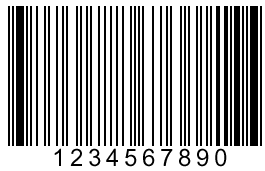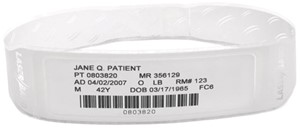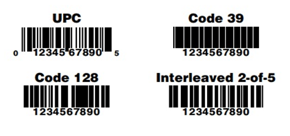
by Administrator | Aug 28, 2015 | Uncategorized
A barcode is an optical machine-readable representation of data relating to the object to which it is attached. Originally barcodes represented data by varying the widths and spacing’s of parallel lines and may be referred to as linear or one-dimensional (1D). Later they evolved into rectangles, dots, hexagons and other geometric patterns in two dimensions (2D). Although 2D systems use a variety of symbols, they are generally referred to as barcodes as well. Barcodes originally were scanned by special optical scanners called barcode readers; later, scanners and interpretive software became available on devices including desktop printers and smartphones. Barcodes are on the leading edge of extraordinary things. They have given humans the ability to enter and extract large amounts of data in relatively small images of code. With some of the latest additions like Quick Response (QR) codes and Radio-frequency identification (RFID), it’s exciting to see how these complex image codes are being used for business and even personal use. The original idea of the barcode was first introduced in 1948 by Bernard Silver and Norman Joseph Woodland after Silver overheard the President of a local food chain talking about their need for a system to automatically read product information during checkout. Silver and Woodland took their inspiration from recognizing this rising need and began development on this product so familiar to the world now. After several attempts to create something usable, Silver and Woodland finally came up with their ”Classifying Apparatus and Method” which was patented on October 07, 1952. Here is an image extracted from the original patent documents of the idea that eventually led to the barcode:...

by Administrator | Aug 28, 2015 | Uncategorized
The history of the barcode from the mid-1970s to the mid-1990′s. Barcodes such as the Universal Product Code (UPC) have become a widely used component of contemporary society, as evidenced by their enthusiastic usage by stores world-wide; almost every unit other than fresh green goods from a grocery store, department store, and mass merchandiser has a UPC barcode on it. Economic studies were conducted by the mid-1970s for the grocery industry committee that projected over $40 million in savings to the industry from scanning. Those numbers were not met in the time frame they projected and some were said to have expected the demise of barcode scanning. The usefulness of the barcodes required the adoption of high-priced scanners by a critical mass of retail merchants while manufacturers were adopting barcode labels at the same time. Neither wanted to move first and outcomes were not promising for the first couple of years, with Business Week exclaiming ”The Supermarket Scanner That Failed.” Barcodes have opened the door to a revolutionary way of tracking business assets. A barcode provides automatic data capture which reduces human error during data entry, saving time and expense due to errors and manual entry. By 1980, the barcode was introduced by over 8,000 grocery stores per year. 1980 also signified the year that the first thermal transfer printer that was introduced by Sato. In 1984, the Los Angeles Olympics chose Computer Identics to track and control access and security with barcodes. By 1984, several businesses had already kicked off the barcoding industry into what we now know it to be including: Bar Code Graphics, Inc. Express Identification Products...

by Administrator | Aug 28, 2015 | Uncategorized
Barcodes such as the UPC have become a ubiquitous element of modern civilization, as evidenced by their enthusiastic adoption by stores around the world; almost every item other than fresh produce from a grocery store, department store, and mass merchandiser has a UPC barcode on it. This helps track items and also reduces instances of shoplifting involving price tag swapping, although shoplifters can now print their own barcodes including 1D & 2D barcodes. In addition, retail chain membership cards (issued mostly by grocery stores and specialty “big box” retail stores such as sporting equipment, office supply, or pet stores) use bar codes to uniquely identify consumers, allowing for customized marketing and greater understanding of individual consumer shopping patterns. At the point of sale, shoppers can get product discounts or special marketing offers through the address or e-mail address provided at registration. Barcodes can allow for the organization of large amounts of data. They are widely used in the healthcare and hospital settings, ranging from patient identification (to access patient data, including medical history, drug allergies, etc.) to medication management. They are also used to facilitate the separation and indexing of documents that have been imaged in batch scanning applications, track the organization of species in biology,[13] and integrate with in-motion check weighs to identify the item being weighed in a conveyor line for data collection. They can also be used to keep track of objects and people; they are used to keep track of rental cars, airline luggage, nuclear waste, registered mail, express mail and parcels. Barcoded tickets allow the holder to enter sports arenas, cinemas, theatres, fairgrounds, and transportation, and are used...

by Administrator | Aug 28, 2015 | Uncategorized
With the variety of barcode symbologies currently available, how can you be sure that the one you choose will fulfil your requirements? This guide is a basic reference to help you sort through the options. Additional articles will follow soon with more detail about each symbology on its own, and as always, please let us know if you have any questions or input! Linear Barcode Symbologies (1D): Linear Barcode symbologies are likely the ones most people are familiar with. These barcode symbologies are created with parallel black and white bars and spaces of varying sizes and are used to automatically and accurately capture data and reduce human error during entry as they are read by a laser scanner. The scanner reads the barcode from left to right in one dimension which is why linear barcodes are referred to as 1-D barcodes. Some of the common Linear Barcode symbologies you might come across are UPC: Standard barcode for retail environments. Each UPC number relates to one specific retail item. Codes are regulated by www.GS1.org and are only produced as static (non-changing) numbers. Code 39 (or Code 3 of 9): Most common barcode symbology. Codes alphanumeric character set, and is very strong in asset tracking applications requiring sequential data (i.e. 0001, 0002, 0003, etc.). Code 128: Less common than code 39, but still widely used. It is also more compact than code 39, so you can fit more characters in smaller spaces. Interleaved 2 of 5 (or I 2 of 5): Symbology that requires an even number of encoded digits. Only numeric information can be encoded. 2D Barcode Symbologies This second...








